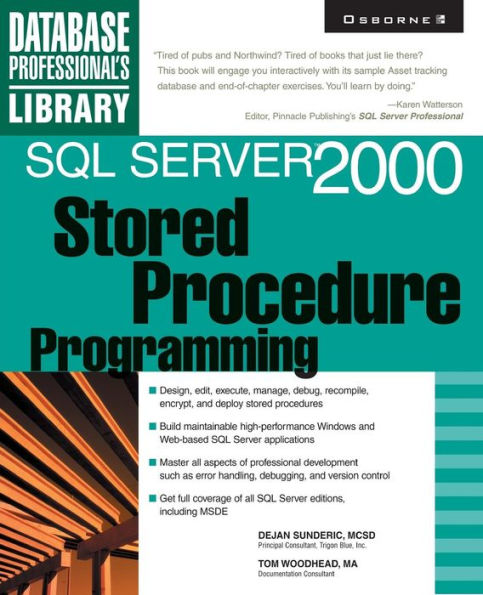Read an Excerpt
Chapter 1: Introduction
Welcome to SQL Server 2000 Stored Procedure Programming. This book identifies and describes the key concepts, techniques, tips, tricks, and habits the professional developer needs to master in order to take full advantage of stored procedures in the SQL Server development environment.
Microsoft SQL Server is the relational database management system (RDBMS) of choice for a growing number of business organizations and professional database and application developers. The reasons for this growing popularity are quite simple: Integration No other RDBMS integrates as fully and cleanly with applications and integrated development environments (IDES) designed to run on the ubiquitous Microsoft Windows platform.
Power SQL Server makes large amounts of data available to large numbers of concurrent users while maintaining the security and integrity of the data. At the time of this writing, SQL Server holds the record in TPC-C benchmark tests for performance and price/ performance (see www.tpc.org).
When we began working with SQL Server, reference materials relating to the development and deployment of stored procedures were rare and not particularly helpful. These materials described basic concepts, but the examples presented were often trivial and not complex enough to be applied to real-world situations in which aspects such as error handling, debugging, naming conventions, and interfaces to other applications are critical. As the legions of application developers and development DBAs migrate from Microsoft Access to SQL Server, and as SQL Server becomes the RDBMS of choice for mission-critical application development, the need for more advanced work on SQL Server stored procedures becomes even more critical.
This book has been written to fill this gap, and thus it has been written with a wide audience in mind. Ideally, it will be neither the first nor the last book you read on SQL Server, but it may be the one you refer to and recommend the most. Above all, this book has been written to help professional developers get the most out of SQL Server stored procedures and produce quality work for their clients. If you are an experienced SQL Server developer, you will find this book to be an essential reference text full of tips and techniques to help you address the development issues you encounter in the course of your day-to-day development activities.
If you have some experience with SQL Server development, but substantially more in other programming environments such as Visual Basic, you will find this book useful as a tool to orient yourself with the SQL Server environment and become proficient more quickly with SQL Server stored procedure concepts and methods. If you are a novice SQL Server developer, the concepts, tips, and techniques you will learn in reading this book and working through the exercises will help you attain the knowledge, skills, and good habits that will make you an accomplished professional.
We hope that this book remains close to your workstation for a long time. Indeed, in the course of this book's useful life, you may in turn be all three of the users just described.
All chapters in this book (aside from the one you are reading, which is introductory in nature) provide conceptual grounding in a specific area of the SQL Server development landscape...



